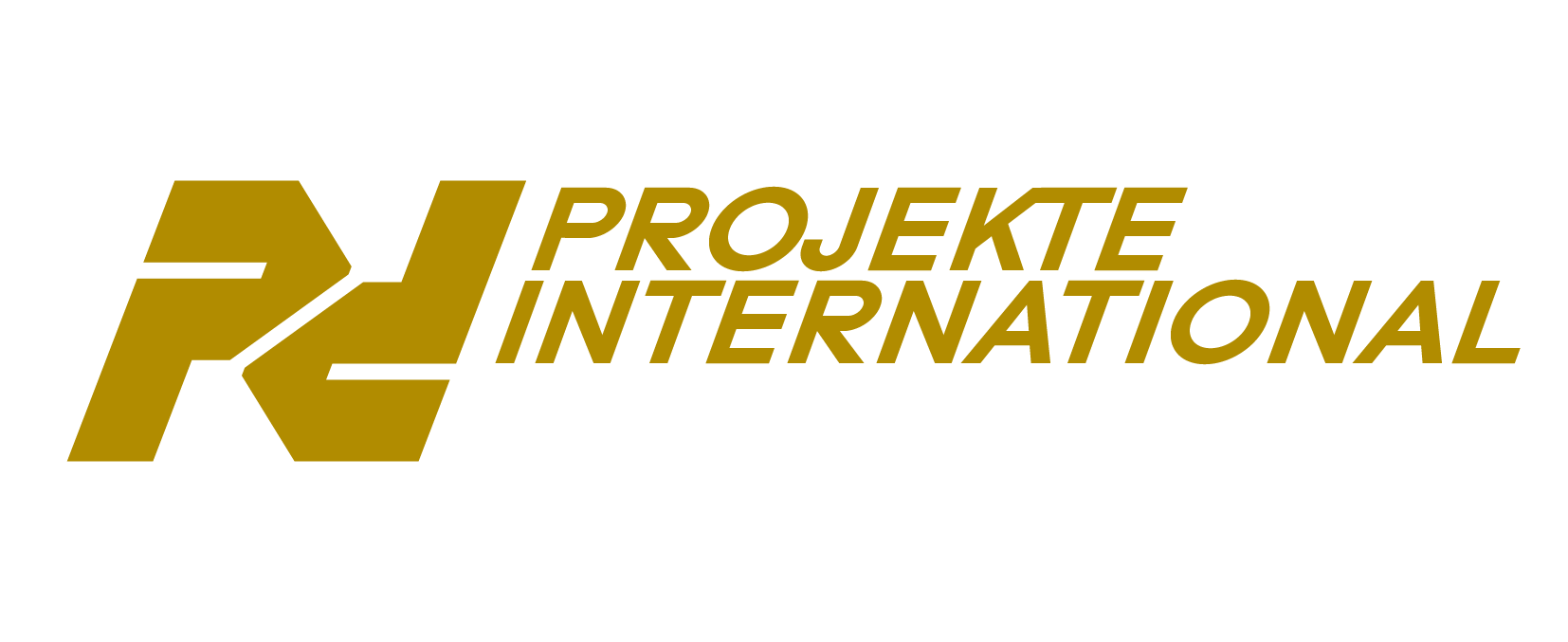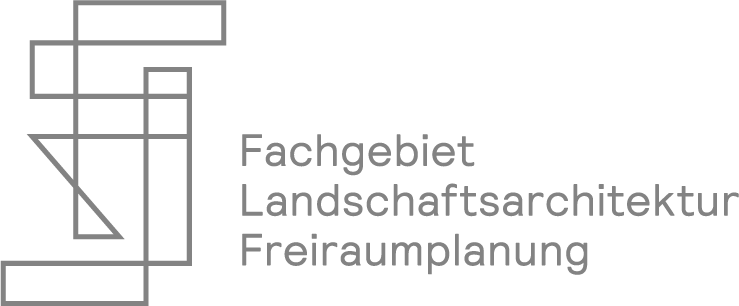INVESTIGATIONS! Article
The Future of Urban Consumption
By: Dr. Moritz Ahlert
Serdar Ayvaz, Mashid Balazadeh, Panos Bakas, Paul Bostanjoglo, Çansu Bulduk, Sarah Liz Dietz, Katherine Eynon, Sena Gür, Elisabeth Haentjes, Johannes Hanisch, Sinali Laldaram, Leon Klaßen, Lisa Kolkowski, Joanna Kowalik, Katya Kropacheva, Max Pfeffer, Roberta Palma, Pauline Timper,
Simon Warne
Studio: Atlas of Digital Fragments 2 I SS2020
Habitat Unit
Published on September 25, 2020
Digitalization of urban infrastructures
Digitalization and urbanization are deeply intertwined. Digitalization has a deep impact on the shape of a city in the near future. How will our cities look in 2040, how are they being designed today? What will be the role of architects and urban planners designing them? And what role do digital technologies and digital infrastructures play? Digitalization deeply questions how infrastructure, as the glue of urbanization, will (need to) change and reconfigure in light of global and local challenges to provide for a livable future in 2040.
Yet, the impact of digitalization in shaping urban transformation is highly contested[1].
For the Habitat Unit, the topic of digitalization of cities is especially relevant because the digital transformation is accompanied by ever-increasing energy and resource consumption, as well as global production and consumption patterns that foster failing climate protection. The German Advisory Council on Global Change states: "only if digital change and the transformation towards sustainability are synchronized we can succeed in advancing climate protection and in making social progress in human development"[2].
Smart Cities
Digitalization of the urban is often discussed in the context of smart cities, like Songdo, Masdar or the recently failed Google’s Sidewalk Lab Neighborhood in Toronto.
"By 'smart cities', we mean equipping and upgrading cities and their infrastructures with digital technology, linking previously separate infrastructures or their subsystems. The term 'smart cities' also incorporates the modernization of municipal decision-making, planning and management processes by involving citizens and private capital, and making intensive use of data"[3] recently claimed the German Federal Institute for Research on Building.
Key drivers of these smart city strategies are often initiated by city governments themselves or by national authorities like the cited German institution. On the other hand, global technology groups (e.g. IBM, Cisco, Siemens or Google) are significant drivers of urban smartification, as cities often cannot build up complex data-driven urban management-systems themselves. This creates long term risk of dependencies of municipalities on proprietary software or individual technology providers.
The main promises of smartness [4] is that cities become more efficient, productive, sustainable and resilient, but also that security, safety and quality of life in cities are enhanced. Therefore they have to become data-driven, using analytics and artificial intelligence to make sense of data about citizens and infrastructure for a more responsive urban environment [5]. Another acclaimed benefit can also be improved municipal administration, including participatory urban planning and management processes.
But a frequent concern voiced by critics is the reliance of digital urban management tools like smart grids, CCTV control rooms, sensor networks, urban management systems or ubiquitous computing [6] of so-called smart cities on ›big data‹, collected, monitored, tracked, computed, geo-localized and/or networked by ubiquitous devices and sensors. [7] In a nutshell, the potential risk of these smart techniques is attempted total surveillance and loss of privacy, not only in public spaces [8,9].
The Future of Urban Consumption
Besides the wholistic smart city visions already mentioned, in the last ten years in many cities around the globe a manifold of corporate platform services and thousands of urban consumption applications emerged, that transform already existing urban everyday practices such as mobility, housing, tourist accommodation, food delivery and workspaces, but also how work is organized and distributed.
Many of these platforms [10] are critically discussed because they are designed to disrupt existing markets and placing profit before people and the environment because they are fostering inequalities between citizens, while they are violating data privacy and commodifying personal data. Examples of these platforms are extensive: automated driving and centralized traffic monitoring services; apps for networking of information on location, environment and traffic; housing and smart building services; shopping applications; accommodation, mobility and sharing services, and so on.
In the context of the Habitat Unit seminar 'Atlas of the Digital Fragments 2 – the Future of Urban Consumption' [11] we were researching the impact of digitalization on urban fabrics along with global case studies, digital tools and projects that are actively shaping urban transformation processes, mainly with the focus on the global north. The focus of this research was on the role of urban actors (as a producer, consumer or prosumer) and their role in the future of urban consumption. We approached the city of the future by focusing on changes in consumer behaviour: the effects of online shopping on transportation, traffic and infrastructure (Uber, Zalando, Lieferando, Amazon, DHL e.g.). The title ›future of urban consumption‹ referred to a broad range of changes in individual consumption fostered by digital technology: from ordinary online commerce, the consumption of digital and digitized goods, consumption pushed by new forms of personalized advertisement or augmented and virtual realities, new forms of tracking and visualization techniques, goods delivered or produced by automized robots or enhanced by artificial intelligence/machine learning and hosted by sharing economies and gig workers.
Therefore the seminar combined collective research, analysis, discussion of global case studies of digital examples of urban consumption. The seminar resulted in 'Desktop Documentaries' [12] (video-essays based on found-footage mixed with self-produced audio and video material).
In the following section, thirteen video essays in the form of Desktop Documentaries are discussed alongside selected systematic risks and challenges of 'The Future of Urban Consumption', as the main findings of our collective visual and theoretical explorations.
Berlin-Brandenburg 2040
The Seminar 'Atlas of Digital Fragments – The Future of Urban Consumption' mainly had an urban focus. Nevertheless, the topics, risks and challenges are highly relevant for urban-rural relationships, as digitalization is raising new questions of the constitution of the urban, questioning all aspects of social, ecological, economic and cultural operating systems, which are all highly relevant for the future of Berlin-Brandenburg.
Digitalization proposes a reconfiguration between the urban centre and the periphery.
Until now there is still a large digital divide between urban and remote rural regions, like parts of Brandenburg. What would happen if not only urban agglomerations are developed as ›smart cities‹, but also if rural areas would be transformed into 'smart countrysides'?
Could a digitally equipped periphery reduce the rural exodus and the trend towards urbanization? The massive shift from mass-commuting to mass-working-from-home enhanced by digitalization, the current pandemic shows the potential of this scenario.
Only if digital change and the transformation towards sustainability are synchronized in Berlin-Brandenburg can we succeed in advancing climate protection and developing social progress? To achieve that, all functional areas of society, such as administration, mobility, energy, food & water infrastructure, transportation and production facilities, healthcare and education of Berlin-Brandenburg need to be digitally connected, but in an accessible, affordable, open and safe way.
[fig. 1] Trailer of ›Atlas of Digital Fragments 2 – The Future of Urban Consumption‹ by Elisabeth Haentjes
Systematic risks and challenges of
›The Future of Urban Consumption‹
Disempowerment
Through the spread of sensor systems in public spaces and on urban devices, as well as geo-location-based apps on smartphones, more and more everyday actions, shopping habits and movement patterns of citizens are digitally registered. Digital services accumulate massive amounts of information. In smart cities citizens can hardly avoid the generation of data because this is the immanent condition for using urban infrastructures. Citizens are the source and user of these data streams at the same time. The Desktop Documentary of Panos Tsiamyrtzis Bakas confronts the risks of disempowerment of the individual, threats to privacy and the undermining of the digitalized public sphere through digitally empowered totalitarianism. Meanwhile Max Pfeffer & Leon Klaßen address threats posed by big data in particular, while focusing on the heat map as a specific form of visualization that makes the invisible visible.
[fig. 2] Physical Bodies in Codespace, who decides?‹ by Panos Tsiamyrtzis Bakas
[fig. 3] ›Change is where the heat is!‹ by Max Pfeffer & Leon Klaßen
Centralization
The rise of commercialized smart city approaches foster the fragmentation of urban fabrics instead of ›bringing the world closer together‹ (Mark Zuckerberg). ›Spatial software‹ and globally operating data-driven companies like Google or Facebook are actively shaping urban transformation processes but also functioning as new gateways for private corporations to dominate urban fabrics. Their strategy is to develop and aggregate data and offer devices and services and in return provide the central foundations of the digital infrastructure. Katya Kropacheva & Roberta Palma research how targeted advertising is expanding from the web into the real world to steer users in directed ways. Paul Bostanjoglo reflects how augmented realities are already transforming the perception of urban space into a corporate dominated sphere.
[fig. 4] ›Why Targeted Advertising Is Scarier Than You Think‹ by Katya Kropacheva & Roberta Palma
[fig. 5] ›Augmented Urbanity‹ by Paul Bostanjoglo
Disruption
Mark Graham, economic geographer and expert for digital labour and digital inequalities states: »Smart technologies are explicitly designed to be disruptive innovations; that is, to radically transform how established activities are organized and performed. For the corporations who develop them, the aim is to disrupt how the state operates and to create a new market for their products and services, or to disrupt existing market actors.«[15] Urban labour markets are currently undergoing profound changes. Digitalization has a big impact on labour markets and produces new forms of work platforms and new (quasi-self-employed) forms of work like the so-called gig economies. Gig economy refers to location-based work facilitated and distributed by digital platforms[16]. Work is paid per single task. Forms of the gig economy allow platforms to outsource work, to bypass legal regulations, to reduce transaction costs, to circumvent important safety standards. These strategies create new risks of exploitation and monitoring of workers[17]. Pauline Timper & Johannes Hanischs and Joanna Kowalik's video essays both discuss the conditions of current urban food delivery services and their future from different perspectives. While Mashid Balazadeh focuses on the digital transformation of the taxi market in Tehran into a gig economy by a Berlin-based startup company.
[fig. 6] ›The Gig Economy: Jobs designed for Humans or Robots?‹ by Pauline Timper & Johannes Hanisch
[fig. 7] ›Giggers And Kitchens‹ by Joanna Kowalik
[fig. 8] › Bridging the Gap‹ by Mashid Balazadeh
Unsustainability
Online shopping causes ever-increasing environmental harm through heightened delivery traffic, packaging waste, the growing returns and the increasingly international exchange of goods. But it also exploits natural resources by the construction of infrastructures of consumerism: access roads and enormous distribution centres for online commerce companies.
Buying things online is the ›new normal‹. As a physical result, more and more retail stores are closing in towns and villages, but also in major city centres. Katherine Eynon reflects on her own shopping chronic and how Amazon, as the dominant online e-commerce platform, transforms the nature of how we interact with the city in her Desktop Documentary and how it normalizes unsustainable resource consumption on a planetary scale.
[fig. 9] ›Feeling Fulfilled‹ by Katherine Eynon
Digital Divide
Digital divide is the uneven distribution of the access to, use of, or impact digital technologies between societal groups. The digital divide can increase already existing socio-economic inequalities. The current COVID-19 pandemic [18] shows in manifold ways in which internet connectivity enables the transition from physical to virtual, but it also highlights how it fosters a deeper division of society, also in Germany. Not every job offers the same potential to do it online and not everyone has the same access and basic infrastructure to work from home. Sinali Laldaram & Simon Warne discuss in their video essay the pre-pandemic transformation of Berlin in a start-up-city driven by transnational tech companies fostering new forms of a spatial digital divide. Meanwhile, Sena Gür is researching how the pandemic has a massive impact on the re-configuration between city centre and the periphery, in her case study focussing on Istanbul.
[fig. 10] ›Prototyping the Startup City‹ by Sinali Laldaram & Simon Warne
[fig. 11] ›Digital Collar‹ by Sena Gür
Automation
Alongside big data and artificial intelligence, the topic of automation is currently widely discussed when it comes to digitalization. This term is associated with increasing robotic and algorithm-based systems. The main promise of digitally enhanced automation is higher productivity of production processes but also the cost-efficient reorganization of internal company workflows, transport routes and infrastructures. The fear of automatization is job loss and huge disruptions of labour markets, with unpredictable social effects. The Desktop Documentary of Elisabeth Haentjes reflects the urban and social impact of robots, as one specific form of automation, as replacements of human work. Çansu Bulduk’s video essay focuses on the expanding use of automation in the manufacturing processes and speculations about its effects on the future of work and the human-machine relationship, starting with the current plan of Tesla to build a so-called gigafactory at the border of Berlin and Brandenburg. Lisa Kolkowski discusses the potential and challenges of autonomous mobility concepts, with focus on cars enhanced with sensors, that can in some cases already drive fully automatically on motorways or in city traffic, without any human intervention.
[fig. 12] ›Automated Futures‹ by Çansu Bulduk
[fig. 13] ›City Robots – Cui Bono?‹ by Elisabeth Haentjes
[fig. 14] ›Mobility of the Future - Autonomous Driving?‹ by Lisa Kolkowski
Hacking
With the spread of digitization during the twenty-first-century cities will become progressively data-driven and networked, but at the same time, they become more and more vulnerable to digital risks such as hacker attacks and viruses. As cities go online, they also become hackable. In her video essay, Sarah Liz Dietz discusses the means, the significance, and the potentials of ›civic hackers‹[19] operating today’s and tomorrow’s smart cities dominated by the logic of ›platform urbanism‹[20]. The video also reflects the role of new forms of hackers, like the Berlin artist Simon Weckert, which generated temporary virtual traffic jams in Google Maps by walking through the city with 99 second-hand smartphones in a handcart.[21]
[fig. 15] ›Citizen Hacker‹ by Sarah Liz Dietz
[1] See: Francesca Bria and Evgeny Morozov, Die Smarte Stadt Neu Denken (Berlin, 2017). and “Beware of Smart People! Redefining the Smart City Paradigm towards Inclusive Urbanism: Proceedings of the 2015 ‘Beware of Smart People!’ Symposium,” 2016, https://doi.org/10.14279/DEPOSITONCE-5074.
[2] Wissenschaftlicher Beirat der Bundesregierung Globale Umweltveränderungen, Towards Our Common Digital Future, 2019, 8.
[3] BBSR – German Federal Institute for Research on Building, Urban Affairs and Spatial Development, “Digitale Stadt,” 2018, https://www.bbsr.bund.de/BBSR/DE/Stadtentwicklung/StadtentwicklungDeutschland/digitale-stadt/digitale-stadt-node.html.
[4] Orit Halpern, Robert Mitchell, and Bernard Dionysius Geoghegan, “The Smartness Mandate: Notes toward a Critique,” Grey Room 68 (September 1, 2017): 106–29, https://doi.org/10.1162/GREY_a_00221.
[5] See: Carlo Ratti and Matthew Claudel, The City of Tomorrow: Sensors, Networks, Hackers, and the Future of Urban Life (New Haven ; London: Yale University Press, 2016).
[6] Clemens Apprich, “FCJ-213 Babylonian Dreams: From Info-Cities to Smart Cities to Experimental Collectivism,” The Fibreculture Journal, no. 29 (July 31, 2017), https://doi.org/10.15307/fcj.29.213.2017.
[7] Shoshana Zuboff, The Age of Surveillance Capitalism: The Fight for a Human Future at the New Frontier of Power, First edition (New York: PublicAffairs, 2019).
[8] Joe Shaw and Mark Graham, “An Informational Right to the City? Code, Content, Control, and the Urbanization of Information: An Informational Right to the City?,” Antipode 49, no. 4 (September 2017): 907–27, https://doi.org/10.1111/anti.12312.
[9] Beth Coleman, “Right to the Smart City: How to Represent, Resist, or Disappear,” in Ways of Knowing Cities, ed. Laura Kurgan and Dare Brawley (New York, NY: Columbia Books on Architecture and the City, an imprint of the Graduate School of Architecture, Planning, and Preservation Columbia University, 2019), 146–57.
[10] Sarah Barns, Platform Urbanism: Negotiating Platform Ecosystems in Connected Cities (Singapore: Springer Singapore, 2020), https://doi.org/10.1007/978-981-32-9725-8.
[11] The framework of this seminar was developed in close collaboration with Vera Tollmann (Uni Hildesheim) a Berlin-based media and internet theorist. In the first part of the experimental theory-seminar Atlas of Digital Fragments (WS2018/2019), we aimed to map globally digital tools and projects, which reveal the potential to empower local urban actors in actively shaping urban transformation processes.
The focus of this research has been on bottom-up approaches and techniques (e.g. decentralized platforms, networks, digital maps), which respond to and facilitate the growing interest of citizens/users in taking a more active part in shaping their cities themselves. How can digital tools enable local communities and support user driven urban transformation processes and co-production of neighborhoods? How can planners foster the reappropriation of digital space outside the dominant corporate sphere? What is the relationship between digital and physical commons? Are there digital counter strategies for empowerment, especially for the growing informal settlements in the Global South?
Therefore the key topics of the research have been: open access, open data, digital co-production, empowerment for informal communities through digital tools. The found case studies have a broad thematical spectrum: From mobility, to crisis management, to community mapping, to civic participation, to payment and microfinance systems, to actors based urban management, to questions of open digital infrastructures; on very different scales. Aim of the research is to critically reflect the case studies and their individual context.
The seminar consisted of, parallel to reading sessions, individual desktop research, combined by a constant collaborative group discussion and reflection process. Final output of the research are 1-3 posters for each project.
[12] See: Kevin B. Lee, “De-Coding or Re-Encoding?,” in The State of Post-Cinema, ed. Vinzenz Hediger and Alena Strohmaier (London: Palgrave Macmillan UK, 2016), 211–24, https://doi.org/10.1057/978-1-137-52939-8.
[13] Keller Easterling, Extrastatecraft: The Power of Infrastructure Space (London ; New York: Verso, 2014).
[14] See: Moritz Ahlert, “The Power of Virtual Maps,” Hamburger Journal Für Kulturanthropologie (HJK), no. 9 (July 2, 2019): 51–57.
[15] Mark Graham et al., How to Run a City like Amazon, and Other Fables, 2019, 6.
[16] See: Nick Srnicek, Platform Capitalism, Theory Redux (Cambridge Malden, MA: Polity, 2017).
[17] See: Mark Graham and Joe Shaw, Towards a Fairer Gig Economy (Meatspace Press, 2017).
[18] Felix Stalder, “The Pandemic as Smart City Laboratory,” June 21, 2020, http://felix.openflows.com/node/574.
[19] Anthony M. Townsend, Smart Cities: Big Data, Civic Hackers, and the Quest for a New Utopia, First edition (New York: W.W. Norton & Company, 2013).
[20] Barns, Sarah. Platform Urbanism: Negotiating Platform Ecosystems in Connected Cities. Singapore: Springer Singapore, 2020. https://doi.org/10.1007/978-981-32-9725-8.
[21] Simon Weckert, “Google Maps Hacks, Performance & Installation, 2020,” February 2020, http://simonweckert.com/googlemapshacks.html.
BB2040
[EN] Berlin Brandenburg 2040 was initiated by the Habitat Unit in cooperation with Projekte International and provides an open stage and platform for multiple contributions of departments and students of the Technical University Berlin and beyond. The project is funded by the Robert Bosch Foundation.
[DE] Berlin Brandenburg 2040 wurde initiiert von der Habitat Unit in Kooperation mit Projekte International und bietet eine offene Plattform für Beiträge von Fachgebieten und Studierenden der Technischen Universität Berlin und darüberhinaus. Das Projekt wird von der Robert Bosch Stiftung gefördert.








